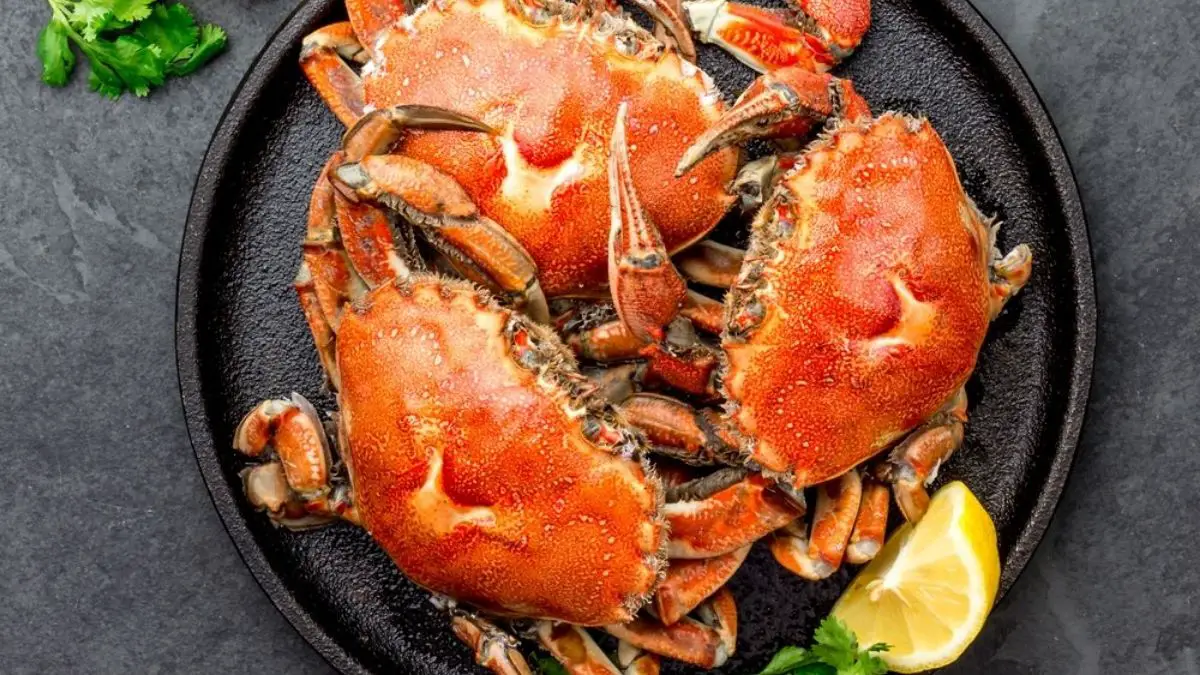Crab meat is one of the most delicious types of seafood, but it also carries some serious health risks if consumed past its prime Eating bad crab meat can expose you to bacteria, parasites, and toxins that cause foodborne illness In this article, we’ll look at what can happen if you eat crab meat that’s gone bad.
Food Poisoning is Common
Eating spoiled crab is perhaps the fastest way to get food poisoning. The crab naturally contains bacteria that multiply rapidly when refrigeration fails. Common symptoms of food poisoning include:
- Nausea and vomiting
- Abdominal cramps and diarrhea
- Fever and chills
- Headaches
- Muscle aches
Food poisoning from crab meat can onset within hours of eating it. Most cases clear up on their own within 48 hours However, certain bacteria like Vibrio vulnificus can occasionally cause serious complications like blood infections or liver damage People with compromised immune systems are especially vulnerable.
Risk of Vibrio Infection
Many types of Vibrio bacteria occur naturally in seawater. Raw or undercooked shellfish can pass these bacteria onto humans, where they take hold in the intestines. According to the CDC, Vibrio causes over 80,000 illnesses each year in the United States.
One species called Vibrio vulnificus poses the greatest threat. It’s present in higher concentrations during summer months when coastal waters are warmer. Eating raw oysters poses the biggest risk, but cooked crab can also transmit Vibrio if cross-contamination occurred during processing.
Vibrio vulnificus can be life-threatening in people with weak immune systems, liver disease, or open wounds. Bloodstream infections have a mortality rate exceeding 50%. Quickly seeking medical care with antibiotics greatly improves the chances of survival.
Other Bacterial Infections
Salmonella enterica is another common bacterial culprit in seafood poisoning. It’s found in the intestinal tracts of birds and mammals. During processing and storage, Salmonella can contaminate the raw meat. Cooking usually kills Salmonella, but crab meat cooked below 145°F still poses a hazard.
Listeria monocytogenes only rarely causes crab meat outbreaks, but it’s concerning because it can survive refrigerator temperatures. Listeria thrives in salty, moist environments like seafood processing plants. Pregnant women, newborns, and elderly individuals face an elevated risk of infection.
Parasitic Roundworms
Raw or undercooked crab also provides an opportunity for parasitic roundworms to infect humans. The larvae can penetrate the intestine and migrate through the body, forming cysts in various organs. Most often they end up in muscle or brain tissue.
Roundworm species that pose a risk with crab include:
- Paragonimus – Lungs
- Anisakis – Stomach
- Gnathostoma – Skin and central nervous system
Thorough cooking kills the larvae and prevents infection. But parasites can still cause issues when present in raw preparations like ceviche. Removing the dark vein from crab prior to eating reduces the parasitic risk. Freezing can also inactivate some larvae.
Toxins in Spoiled Crab
As crab meat starts decomposing, bacteria produce waste products called toxins. These toxins can’t be destroyed through cooking and many withstand freezing as well. Just a small dose causes illness within 30 minutes to a few hours.
Two main toxins contaminate spoiled crab:
Histamine – Causes hives, rash, diarrhea, headache, and hypotension. Mild reactions resemble allergies.
Scombrotoxin – Leads to flushing, headache, palpitations, and peppery taste in mouth. Also called scombroid poisoning.
Proper refrigeration prevents toxin production. However, histamine and scombrotoxin can still occur if temperatures exceed 38°F during storage and transport. Once formed, these toxins persist even if crab meat is later frozen.
How to Spot Bad Crab Meat
Check for these signs that crab has spoiled:
- Ammonia-like odor
- Slimy texture
- Discoloration or dark veins
- Mold growth
Sniff crab meat before use and observe its appearance. If anything seems off, play it safe and throw it out. Only consume crab meat that smells clean with a natural, briny scent. It should have a firm, pearly white color throughout.
Proper Storage Is Key
To avoid getting sick, be diligent about storage. Cook live crab within two days of purchase. Fresh cooked crab meat keeps one to three days refrigerated. For longer storage, freeze crab in airtight packaging for up to three months.
Thaw frozen crab overnight in the refrigerator. Avoid letting it sit at room temperature more than two hours total before cooking. Reheating until steaming hot kills lurking bacteria.
When dining out, choose establishments with high food safety standards. Avoid raw or undercooked crab preparations, especially if you have a medical condition. Taking simple precautions allows enjoying crab meat without the risk of foodborne illness.

When to Seek Medical Care
Seek medical treatment immediately if the person is unable to tolerate oral fluids, if fever is present, if there is blood in the stool, or if other concerning symptoms develop.
For all other cases of shellfish poisoning, seek medical treatment as soon as possible. Â
wilderness: shellfish poisoning, gastrointestinal; food poisoning; diarrhea; abdominal cramps; vomiting; nausea
More on First Aid


Pros and Cons of Crab Meat
FAQ
What to do if you eat bad crab meat?
Seek medical treatment immediately if the person is unable to tolerate oral fluids, if fever is present, if there is blood in the stool, or if other concerning symptoms develop. For all other cases of shellfish poisoning, seek medical treatment as soon as possible.
How long after eating bad crab do you get sick?
How to tell if crab meat is bad?
